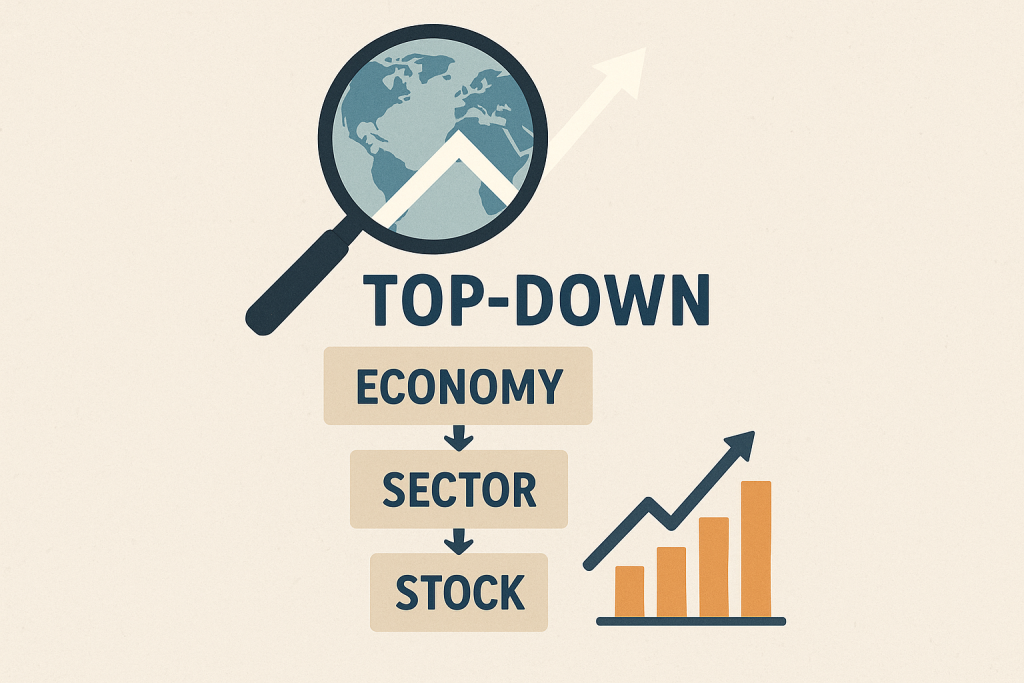When picking stocks, many beginners ask themselves:
“I like this company’s products, should I buy the stock?”
That’s called a bottom-up approach—starting with a company you like.
But today, let’s explore the top-down strategy, where you start with the big picture (the economy), then narrow down to industries, and finally choose the best companies.
🧠 Definition: Top-Down Investing
In simple terms:
“Top-down investing means analyzing the overall economy → then industries → then individual companies.”
Instead of looking at one tree, you look at the forest first, then zoom in on the healthiest trees.
🔍 The 3 Steps of Top-Down Analysis
1. 🌍 Macro-Economic Analysis (Top)
Look at big factors like:
- Interest rates
- Inflation
- Currency exchange rates
- Overall economic growth
👉 Example: If interest rates are rising → economic slowdown risk → focus on defensive stocks.
2. 🏭 Industry Analysis
Based on the economic outlook, pick strong sectors.
- High interest rates → Banks, Insurance
- Low interest rates → Tech, Growth stocks
- Economic recovery → Construction, Steel, Industrials
3. 📈 Company (Stock) Selection (Down)
Within those industries, choose the strongest companies:
- Stable earnings
- Solid balance sheets
- Clear competitive advantages
👉 Example: In semiconductors → analyze Nvidia, AMD, or TSMC.

📊 Example of Top-Down Strategy in Action
Let’s say it’s mid-2023:
- Economy slowing + high interest rates
- → Defensive sectors gain attention (Consumer Staples, Energy, Insurance)
- → Investors might choose Costco, ExxonMobil, or Allstate Insurance
✅ Advantages of Top-Down Investing
- Helps you understand the market cycle
- Reduces risk by aligning with broader trends
- Industry leaders in strong sectors often deliver powerful growth
⚠️ Limitations to Keep in Mind
- Macroeconomic forecasts are often uncertain
- A “good industry” can still contain weak companies
- More suited for medium to long-term investing rather than short-term trading
💬 Final Thoughts
Top-down investing is essentially:
“See the forest before the trees.”
If you want to invest with a clear understanding of the economy and industry trends, the top-down strategy can be a powerful tool in your portfolio.
“It’s not just about picking a stock, it’s about picking the right stock at the right time in the right industry.”
📝 Disclaimer
This article is intended for educational purposes only. It does not constitute financial, investment, or legal advice. All investment decisions involve risks, and readers should conduct their own research or consult with a licensed financial advisor.
